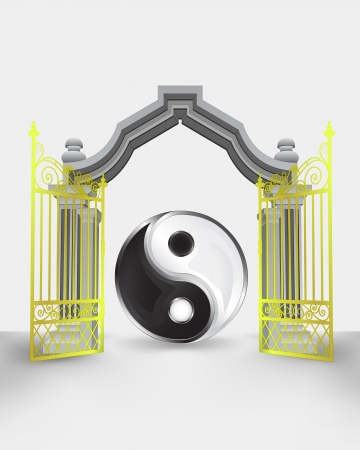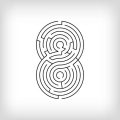1. What Is Feng Shui? An Introduction for American Readers
If youve ever wondered why some spaces just feel better than others, you’re not alone. Many Americans are discovering the ancient Chinese practice of Feng Shui and how it can make homes, offices, and even gardens feel more comfortable, inviting, and full of positive energy. But what exactly is Feng Shui, and why is it gaining popularity in the United States? Let’s explore the basics together.
Understanding the Origins of Feng Shui
Feng Shui (pronounced “fung shway”) literally means “wind” (Feng) and “water” (Shui) in Chinese. This practice dates back thousands of years in China and is rooted in the idea that our surroundings influence our well-being, success, and happiness. Originally developed to help people live in harmony with nature, Feng Shui has evolved into a practical system for arranging spaces to maximize comfort and positive vibes.
The Philosophy Behind Feng Shui
At its core, Feng Shui is all about balance—especially the balance of energy, known as chi (sometimes spelled “qi”). The main goal is to create environments where chi flows smoothly, bringing good health, prosperity, and happiness. When energy gets blocked or stuck, it can lead to problems or discomfort.
Main Concepts of Feng Shui
The foundation of Feng Shui rests on several key ideas. Here’s a simple overview:
| Concept | Description | American Example |
|---|---|---|
| Chi (Qi) | Invisible life force energy that should flow freely in a space. | A living room that feels warm and welcoming versus one that feels cluttered or cold. |
| Yin & Yang | The balance between opposite but complementary forces (like light/dark or soft/hard). | Mixing cozy textures with sleek surfaces in home décor. |
| The Five Elements | Wood, Fire, Earth, Metal, Water—each brings different qualities to a space. | Adding a plant for wood energy or a water feature for calmness. |
| The Bagua Map | An energy map used to analyze how different parts of your space relate to areas of your life. | Placing family photos in the “Family” area of your home according to the Bagua map. |
Why Americans Are Embracing Feng Shui
In recent years, more Americans have started using Feng Shui principles in their homes and workplaces. With growing interest in wellness and mindfulness, people are looking for ways to create spaces that support mental clarity and overall happiness. Whether its rearranging furniture for better flow or adding plants for fresh energy, Feng Shui offers practical tips anyone can try—no matter their style or budget.
2. Core Principles: Chi, Balance, and the Five Elements
If you’re just starting to explore Feng Shui in your American home, understanding its core principles is key. Feng Shui is more than just rearranging furniture—it’s about how energy flows and how your environment supports your well-being. Let’s break down the essentials: chi (energy), balance, and the five elements.
What Is Chi?
Chi (pronounced “chee”) means life force or energy. In Feng Shui, it’s believed that everything has chi—people, pets, even your sofa. The goal is to have a gentle, smooth flow of chi throughout your space. When chi moves freely, it brings positivity and harmony; when it’s blocked or stagnant, you might feel stressed or uncomfortable.
Easy Ways to Improve Chi Flow:
- Keep entryways clear and tidy
- Fix anything broken (doors, handles, lights)
- Add plants for fresh energy
- Avoid clutter—less is more!
The Importance of Balance
Balance in Feng Shui often refers to the concept of Yin and Yang. Think of Yin as calm and quiet (like a cozy bedroom) and Yang as bright and active (like a lively living room). Too much of either can make a space feel off. Aim for a mix: soft textures with bold colors or quiet corners with lively artwork.
Finding Balance in Everyday Spaces:
| Room | Yin Elements | Yang Elements |
|---|---|---|
| Bedroom | Soft bedding, dim lights, cool colors | A pop of color, sunlight during the day |
| Living Room | Cushions, rugs, soothing art | Lively conversation area, bright lighting |
| Home Office | Calm decor, organized shelves | Motivational posters, task lighting |
The Five Elements Explained
Feng Shui uses five natural elements: wood, fire, earth, metal, and water. Each element represents different qualities and can be brought into your home through color, materials, shapes, or decor. Balancing these elements creates a supportive environment.
The Five Elements at a Glance:
| Element | Color/Material | Symbolizes | How to Add It at Home |
|---|---|---|---|
| Wood | Green/Brown; Wood items/plants | Growth & Vitality | Add houseplants or wooden furniture |
| Fire | Red/Orange; Candles/lights/fireplaces | Passion & Energy | Candles or bright artwork in living spaces |
| Earth | Yellow/Beige; Ceramics/stone/clay pots | Stability & Nourishment | Ceramic vases or stone coasters in kitchen/dining areas |
| Metal | White/Gray; Metal decor/frames/silverware | Clarity & Precision | Add metal picture frames or bowls in office or entryway |
| Water | Blue/Black; Fountains/mirrors/aquariums | Flow & Wisdom | A small tabletop fountain or mirror in hallway or bathroom |
Understanding these core principles will help you create a home that feels welcoming and balanced—no matter where you live in America.

3. Debunking Myths: Common Misconceptions in America
Feng Shui has become a popular topic in the United States, but with its rise in popularity, many myths and misconceptions have also spread. Let’s clear up some of these misunderstandings so you can approach Feng Shui with confidence and clarity.
Common American Misconceptions About Feng Shui
| Misconception | The Truth |
|---|---|
| Feng Shui is just about furniture placement | While arranging furniture is one aspect, Feng Shui is actually a holistic philosophy about creating harmony between people and their environment. |
| It’s a religious practice | Feng Shui isn’t a religion. It’s rooted in ancient Chinese philosophy and focuses on energy flow (Qi), not spiritual worship. |
| You need to buy special products or lucky charms | No specific products are required. True Feng Shui emphasizes thoughtful design and organization using what you already have at home. |
| Feng Shui only works in traditional Asian homes | Feng Shui principles can be adapted to any style of home—from suburban houses to city apartments—regardless of cultural background. |
| It’s all superstition or magic | Feng Shui is based on observation of nature and practical ideas for improving well-being, not on superstition or magic spells. |
Stereotypes About Feng Shui Decor
Some Americans think that practicing Feng Shui means filling your space with dragons, bamboo plants, or red lanterns. In reality, these items aren’t required. Feng Shui is less about specific decorations and more about making your space feel balanced, comfortable, and inviting for you and your family.
What Feng Shui Is—and Isn’t
| Feng Shui IS… | Feng Shui ISN’T… |
|---|---|
| A way to arrange your space for better energy flow and comfort | A magical fix for every problem in life |
| Adaptable to any home or lifestyle | Tied to any one culture or religion exclusively |
| About creating harmony between you and your surroundings | A requirement to buy expensive “cures” or trinkets |
| Focused on enhancing everyday living and well-being | A guarantee of wealth or success overnight |
The Takeaway for Americans New to Feng Shui
If you’re interested in trying Feng Shui, start by learning the basics and focusing on how your space feels. Don’t worry about following strict rules or buying special objects. Instead, use what feels right for you and fits your American lifestyle. The real goal is to make your home a place where you feel happy, relaxed, and supported every day.
4. Simple Ways to Apply Feng Shui in American Homes
Feng Shui isn’t just for traditional Asian spaces—it can easily be adapted to fit the unique layouts and lifestyles found in American homes. Whether you live in a cozy apartment, a classic suburban house, or spend most of your time working from a home office, there are practical steps you can take to bring balance, comfort, and positive energy into your living spaces.
Embrace Natural Light and Fresh Air
Open windows whenever possible to let in sunlight and fresh air. Good air circulation is a core principle of Feng Shui and helps maintain vibrant energy (chi) throughout your home. If you have limited natural light, consider using full-spectrum bulbs that mimic daylight.
Declutter Your Space
Clutter blocks the flow of energy and can lead to stress or stagnation. Make decluttering a habit by regularly going through items you no longer need. Organize entryways, countertops, and workspaces for an immediate boost in energy.
Quick Decluttering Checklist
| Area | Decluttering Tip |
|---|---|
| Entryway | Keep shoes organized; remove unused coats or bags |
| Living Room | Clear coffee tables; arrange furniture for easy movement |
| Bedroom | Tidy nightstands; store items under the bed in bins |
| Home Office | File paperwork; keep your desk surface clear |
Use Color Mindfully
Colors influence mood and energy. In Feng Shui, certain colors correspond to different elements and emotions. For example, green brings growth and renewal—great for family rooms—while blue promotes calmness, making it ideal for bedrooms or meditation spaces.
Feng Shui Color Guide for Common Rooms
| Room | Recommended Colors | Feng Shui Effect |
|---|---|---|
| Living Room | Earth tones, warm beige, soft greens | Comfort and connection |
| Kitchen | White, yellow, light brown | Cleansing and nourishment |
| Bedroom | Pale blue, lavender, soft grey | Restful sleep and relaxation |
| Home Office | Pale green, blue-green, white accents | Mental clarity and focus |
Create a Welcoming Entryway (The Mouth of Chi)
The front door is considered the “mouth of chi”—where energy enters your home. Keep this area clean, well-lit, and inviting. Place a welcome mat outside the door and consider adding potted plants or cheerful decor to uplift the space.
Add Nature Elements Indoors
You don’t need an elaborate garden—small touches like houseplants, flowers, or even images of nature help refresh the energy in any room. If you’re worried about maintenance, try hardy options like snake plants or succulents.
Troubleshooting Common American Home Challenges with Feng Shui Solutions:
| Challenge | Feng Shui Solution |
|---|---|
| Lack of storage space in apartments | Use vertical shelves; keep items behind closed doors when possible to reduce visual clutter. |
| No separate dining area in open-plan homes | Delineate spaces with rugs or lighting; use round tables to encourage conversation and harmony. |
| Work-from-home distractions | Create a dedicated workspace facing a solid wall for support; keep electronics organized with cord management tools. |
| Bare walls or empty corners | Add artwork depicting peaceful scenes or place a floor lamp or tall plant to activate stagnant areas. |
The key is to start small—pick one or two tips that resonate with your lifestyle and see how they make you feel. Adapting Feng Shui doesn’t require big renovations; simple changes can create a noticeable difference in the comfort and flow of your American home.
5. Feng Shui for Modern American Lifestyles
Feng Shui isn’t just an ancient practice—it’s a powerful tool that can make life better right here in the United States, no matter how busy or diverse your lifestyle may be. Let’s look at how you can use Feng Shui to support wellness, boost productivity, and create harmonious relationships in today’s American homes and workplaces.
Bringing Wellness Into Your Home
American homes are often busy places with lots of activity. Using Feng Shui principles can help you create spaces that feel peaceful and balanced, even when life gets hectic. For example, arranging your living room furniture to allow easy movement and plenty of natural light can reduce stress. Adding plants or calming artwork is another simple way to promote relaxation and well-being.
Simple Tips for Wellness at Home
| Feng Shui Tip | How It Supports Wellness |
|---|---|
| Let in natural light | Boosts mood and energy levels |
| Use soft colors in bedrooms | Improves sleep quality and relaxation |
| Add indoor plants | Cleans air and brings nature indoors |
| Keep entryways clear | Makes coming home less stressful |
Enhancing Productivity the Feng Shui Way
If you work from home or have a home office, Feng Shui can help you stay focused and motivated. Position your desk so you face the door if possible—this is called the “command position” and can make you feel more in control. Keep your workspace tidy, avoid clutter, and use organizing tools like shelves or baskets to keep supplies handy but out of sight.
Quick Feng Shui Fixes for Your Workspace
- Sit facing the main entrance: This helps you feel secure and aware of what’s happening around you.
- Add a touch of greenery: A small plant or two can improve concentration and bring positive energy.
- Avoid working with your back to a window: If possible, place a solid wall behind you for support.
- Personalize with inspiring décor: Hang up a favorite quote or family photo to keep you motivated.
Nurturing Harmonious Relationships at Home
Diverse families and shared households are common across America. Feng Shui encourages open spaces where people can gather comfortably—think round dining tables for easy conversation, or cozy seating areas that invite connection. Keeping communal spaces clutter-free helps everyone feel welcome and relaxed.
Ideas for Building Stronger Connections Through Feng Shui
| Space | Feng Shui Approach | Benefit for Relationships |
|---|---|---|
| Living Room | Create circular seating arrangements | Makes group conversations easier and more inclusive |
| Dining Area | Choose round or oval tables over sharp-cornered ones | Encourages togetherness during meals |
| Main Hallways/Entryways | Avoid blocking pathways with furniture or shoes | Makes everyone feel more welcome as they come home |
| Shared Bedrooms (kids/roommates) | Add personal touches to each area but keep overall space tidy and balanced | Respects individuality while supporting harmony in shared space |
The American Takeaway: Make It Your Own!
You don’t have to follow every rule perfectly—Feng Shui is about creating a space that works for you. Whether you’re living solo in an apartment, sharing a house with roommates, or raising a family in the suburbs, simple changes inspired by Feng Shui can fit right into your modern American lifestyle. Try out these ideas to see how even small shifts can lead to more wellness, productivity, and harmony at home.


